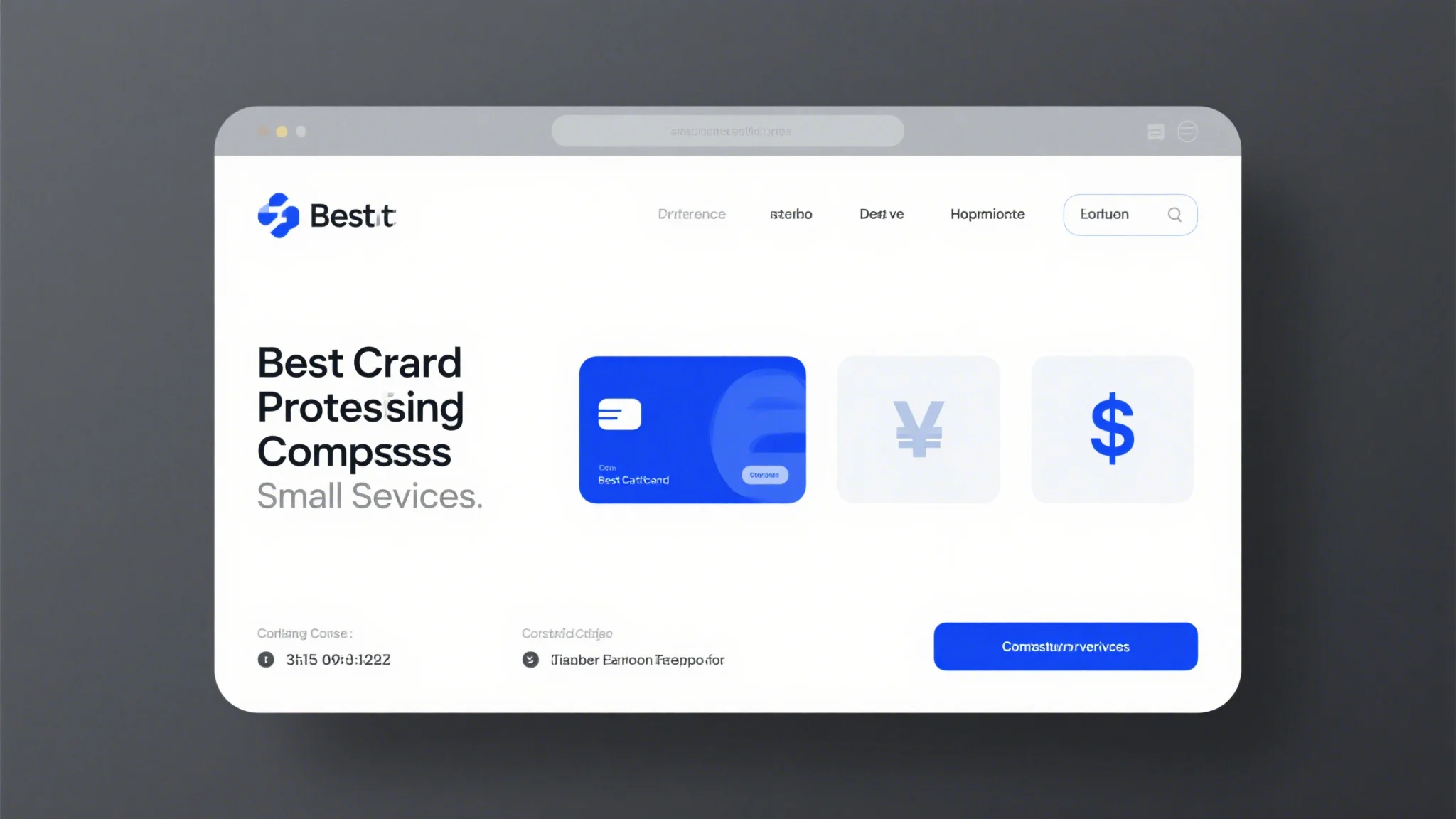The Rise of Mobile Payments and Their Impact on Businesses
In the past decade, mobile payments have revolutionized the way businesses operate, especially for those that are always on the move. The proliferation of smartphones, tablets, and other mobile devices has made it possible for businesses to accept payments anywhere, anytime. This shift from traditional payment methods to mobile payment solutions has not only enhanced customer satisfaction but also improved operational efficiency for businesses.

The Evolution of Mobile Payments
Mobile payments have come a long way since the introduction of mobile banking apps in the early 2000s. Initially, these apps were primarily used for checking balances, transferring money, and making bill payments. However, the launch of mobile payment platforms like Apple Pay, Google Pay, and Samsung Pay marked a turning point. These platforms introduced near-field communication (NFC) technology, enabling users to make contactless payments by waving their smartphones near a payment terminal.
The rise of QR codes has further accelerated the adoption of mobile payments. QR codes are two-dimensional barcodes that can be scanned by mobile devices to facilitate transactions. They have become particularly popular in regions like Asia, where mobile payment systems like Alipay and WeChat Pay dominate. However, their adoption is growing rapidly in other parts of the world as well.
Why Mobile Payments Are Essential for Businesses
For businesses that are on the go, mobile payment solutions offer unparalleled convenience and flexibility. Whether you’re running a food truck, a mobile retail stall, or a service business that operates in multiple locations, mobile payments allow you to accept payments without being tied to a fixed cash register or POS system.
Enhanced Customer Experience:
Mobile payments are fast, convenient, and secure. Customers today expect quick and seamless checkout processes. By offering mobile payment options, businesses can reduce wait times, minimize errors, and provide a more modern and tech-savvy shopping experience.
Cost-Effective Solution:
Setting up a traditional POS system can be expensive, especially for small businesses. Mobile payment solutions, on the other hand, are often more affordable. Many providers offer flexible pricing models, including pay-as-you-go options, which make it easier for businesses to manage their expenses.
Increased Sales Opportunities:
Mobile payments enable businesses to accept payments in more locations and at events. For example, a merchant can set up a pop-up store or attend a trade show and still accept payments without the need for a bulky POS machine. This flexibility can open up new avenues for sales and revenue generation.
Real-Time Analytics:
Many mobile payment platforms come with built-in analytics tools that provide insights into sales trends, customer behavior, and payment patterns. These insights can help businesses make data-driven decisions, optimize their operations, and improve their bottom line.
Types of Mobile Payment Solutions
There are several types of mobile payment solutions available, each catering to different business needs. Here are some of the most popular ones:
Contactless Payments:
Contactless payments involve using NFC technology to enable transactions. Customers simply tap their smartphones or cards on a payment terminal to complete the payment. This method is fast, secure, and widely accepted.
QR Code Payments:
QR code payments involve generating a unique QR code for each transaction. Customers scan the code with their smartphones and enter their payment details to complete the transaction. QR codes are particularly useful for businesses that operate in areas with limited infrastructure, such as rural or remote locations.
Mobile Wallets:
Mobile wallets are apps that store payment information securely on a user’s device. Examples include Apple Pay, Google Pay, and Samsung Pay. These wallets allow users to make payments without sharing their personal information with merchants.
Banking Apps:
Many banks now offer mobile payment solutions through their apps. These apps enable users to make payments, transfer money, and manage their finances on the go.
Third-Party Payment Platforms:
Platforms like Stripe, PayPal, and Square offer mobile payment solutions that integrate with various devices and platforms. These platforms are ideal for businesses that want to accept payments online, in-store, or on the go.
The Benefits of Mobile Payments for Businesses on the Go
For businesses that are constantly on the move, mobile payment solutions offer a range of benefits that make them indispensable.
Flexibility and Convenience:
Mobile payments allow businesses to accept payments in any location. Whether you’re at a market, a festival, or a customer’s premises, you can process transactions instantly.
Reduced Operational Costs:
Mobile payment solutions eliminate the need for expensive hardware and infrastructure. Many providers offer affordable devices and software that can be easily set up and managed.
Improved Security:
Mobile payment systems are designed with advanced security features to protect against fraud and data breaches. Features like encryption, tokenization, and biometric authentication ensure that transactions are safe and secure.
Scalability:
Mobile payment solutions are scalable, meaning they can grow with your business. Whether you’re a small business owner or a large enterprise, you can find a mobile payment solution that meets your needs.
Real-Time Processing:
Mobile payments are processed in real-time, which means that funds are transferred to the merchant’s account quickly. This reduces the risk of delayed payments and cash flow issues.
Choosing the Right Mobile Payment Solution for Your Business
With so many mobile payment solutions available, it’s essential to choose the right one for your business. The key is to evaluate your business needs, assess the features and benefits of different solutions, and select the one that offers the best value for money.
Factors to Consider When Selecting a Mobile Payment Solution
Ease of Use:
Look for a solution that is easy to set up and use. The payment system should be intuitive and user-friendly, with minimal training required for your staff.
Compatibility:
Ensure that the mobile payment solution is compatible with your existing devices and software. For example, if you’re using an iPhone, make sure that the solution supports iOS.
Security Features:
Security is a top priority when it comes to mobile payments. Choose a solution that offers robust security features, such as encryption, tokenization, and fraud detection.
Transaction Fees:
Compare the transaction fees of different mobile payment solutions. Look for a provider that offers competitive rates and transparent pricing.
Support and Customer Service:
Consider the level of support and customer service provided by the mobile payment provider. Look for a provider that offers 24/7 customer support and has a good track record of resolving issues quickly.
Scalability and Flexibility:
Choose a solution that can grow with your business. Look for a provider that offers scalable plans and the ability to add new features as your business expands.
Popular Mobile Payment Solutions for Businesses on the Go
Square:
Square is a popular mobile payment solution that offers a range of tools for businesses on the go. The Square Reader is a compact and portable device that connects to your smartphone or tablet, allowing you to accept credit cards, debit cards, and contactless payments. Square also offers a mobile app that provides real-time analytics and insights into your sales and payments.
Stripe:
Stripe is a payment processing platform that is widely used by businesses of all sizes. The Stripe Terminal is a mobile-friendly device that allows you to accept payments anywhere. Stripe also offers a range of features, such as recurring payments, refunds, and payouts, that make it easy to manage your payments.
PayPal:
PayPal is a well-known mobile payment solution that is trusted by millions of businesses worldwide. The PayPal mobile app allows you to accept payments, send money, and manage your finances on the go. PayPal also offers features like invoicing, refunds, and dispute resolution, which can be invaluable for businesses.
Intuit GoPayment:
Intuit GoPayment is a mobile payment solution designed for small businesses. It offers a range of features, such as payment processing, invoicing, and expense tracking, that can help you manage your finances more effectively. Intuit GoPayment also integrates with QuickBooks, making it a great choice for businesses that use QuickBooks for accounting.
WeChat Pay and Alipay:
If you’re targeting customers in China or other parts of Asia, WeChat Pay and Alipay are two of the most popular mobile payment solutions. These platforms offer a range of features, such as QR code payments,红包 (red packets), and mini-programs, that can enhance your customers’ experience.
How to Get Started with Mobile Payments
Choose a Provider:
Start by researching and selecting a mobile payment provider that meets your business needs. Consider factors like ease of use, compatibility, security, and cost.
Set Up Your Account:
Once you’ve chosen a provider, set up an account and create a merchant profile. You’ll need to provide basic business information, such as your business name, address, and tax details.
Obtain a Payment Device:
Most mobile payment providers offer a range of payment devices, such as readers, terminals, and QR code generators. Choose a device that is compatible with your mobile device and meets your business needs.
Download the Mobile App:
Download the mobile app provided by your payment provider. The app will allow you to process payments, view transaction history, and manage your account.
Train Your Staff:
If you have a team, train your staff on how to use the mobile payment system. Ensure that they understand the features, benefits, and security protocols associated with the system.
Start Processing Payments:
Once everything is set up, you can start processing payments. Encourage your customers to use mobile payments by displaying QR codes, explaining the benefits, and offering incentives.
The Future of Mobile Payments
The future of mobile payments looks bright, with advancements in technology driving innovation and adoption. Here are some trends to watch:
5G Technology:
The rollout of 5G networks is expected to further enhance the speed and reliability of mobile payments. With faster data transfer rates and lower latency, 5G will enable seamless and secure transactions.
AI and Machine Learning:
AI and machine learning are being used to improve the accuracy of fraud detection and enhance the customer experience. For example, AI-powered systems can analyze transaction data to identify suspicious activity and alert merchants in real-time.
Biometric Authentication:
Biometric authentication methods, such as fingerprint scanning and facial recognition, are becoming increasingly popular for mobile payments. These methods provide an additional layer of security and make the payment process more convenient.
Cross-Platform Integration:
As mobile payments continue to evolve, we can expect to see more cross-platform integration. For example, payment systems that work seamlessly across different devices, platforms, and ecosystems.
Regulatory Changes:
Governments and regulatory bodies around the world are introducing new rules and regulations to govern mobile payments. These changes aim to enhance security, protect consumer data, and promote fair competition.
Mobile payment solutions are transforming the way businesses operate, offering unparalleled flexibility, security, and efficiency. For businesses on the go, mobile payments are no longer a luxury but a necessity. By adopting a mobile payment solution, you can streamline your operations, enhance your customers’ experience, and stay ahead of the competition.
When choosing a mobile payment solution, it’s important to evaluate your business needs, assess the features and benefits of different options, and select the one that offers the best value for money. With the right mobile payment solution in place, your business can operate more efficiently, accept payments in more locations, and achieve greater success.
As mobile payment technology continues to evolve, we can expect to see even more innovative solutions that will further enhance the way businesses operate. The key is to stay informed, adapt to new trends, and leverage the power of mobile payments to drive your business forward.
